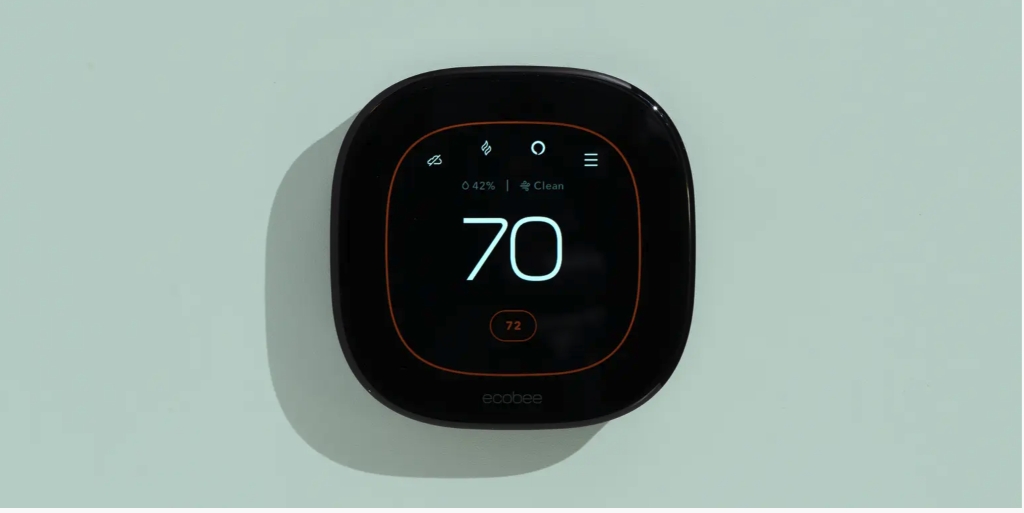Create an Affiliate Blog Post with AI (+ Prompts)

Crafting a compelling affiliate blog post is easier than ever! In this guide, we’ll provide AI-powered prompts, examples, and best practices to streamline your affiliate marketing content creation process.
Discover how to create affiliate blog post outlines that drive traffic, generate leads, and boost sales with Media Shower’s AI-powered content creation platform and award-winning content creation team. Contact us today for engaging affiliate blog post content that resonates with your readers.
First, Generate Your Marketing Overview
Paste the following prompt into ChatGPT or similar AI tool:
Hello! I’m a busy marketing manager who wants to create a concise marketing overview for my business. I need your assistance in this process. Please ask the following ten questions, one at a time.– What is the name of your business?
– Please provide a link to your website.
– What industry does your business operate in?
– What products or services does your business offer?
– Who is your target audience or customer base?
– What is their pain point?
– What is the unique value proposition or critical differentiator of your business?
– How long has your business been operating?
– What are the main goals and objectives of your business?
– Are there any specific marketing channels or strategies that you have used in the past?
Based on my answers, please generate a marketing overview to serve as a primer for future AI prompts. Leverage the 24 VIA character strengths where appropriate. Then let’s check
Then, Generate Your Affiliate Blog Post
In the same chat session, paste the following prompt:
Based on this marketing overview, I want to create an affiliate blog post for my business. Please ask the following questions, one at a time, allowing me to skip questions I don’t know.
- Could you describe your target audience’s demographics, such as age, location, and gender?
- What are the specific pain points or challenges your target audience faces that your products or services address?
- Can you provide any recent customer success stories or testimonials that highlight the effectiveness of your offerings?
- Do you have any competitors in your industry, and how do you compare to them in terms of strengths and weaknesses?
- Are there any upcoming product launches, promotions, or events that should be incorporated into the affiliate blog post?
- Have you identified any keywords or phrases for SEO in your industry or niche?
- What are the preferred content formats for your audience? (e.g., articles, videos, infographics)
- Are there any specific brands, influencers, or publications in your industry that you’d like to be associated with or mentioned in the blog post?
- Do you have any particular call-to-action (CTA) or conversion goals for readers of the affiliate blog post?
- Have you conducted any market research or surveys that can provide valuable data for the blog post content?
Please generate an affiliate blog post based on my answers. Leverage the 24 VIA character strengths where appropriate. Then, let’s check the draft outline for accuracy, asking any clarifying follow-up questions if needed.
More AI Prompts for Creating an Affiliate Blog Post Outline
Once you’ve generated your affiliate blog post, here are further AI prompts to polish and perfect it:
- Refine Target Audience: “I want more insights into my target audience’s preferences and behaviors to create content that resonates with them.”
- Optimize SEO Keywords: “I’d like suggestions on SEO keywords and phrases relevant to my business and industry that should be strategically integrated into my blog post.”
- Analyze Competitor Content: “Please provide an analysis of my competitors’ content strategies to identify gaps and opportunities for differentiation.”
- Enhance Storytelling: “I’m looking for suggestions on infusing storytelling elements into my content for a more engaging narrative.”
- Content Formatting: “Recommendations are needed on structuring my blog post, including headings, subheadings, and bullet points for improved readability.”
- CTA Optimization: “I need AI assistance crafting compelling call-to-action (CTA) statements to drive conversions.”
- Visual Content Ideas: “Please suggest ideas for incorporating visual content, such as images, infographics, or videos, to enhance my blog post.”
- Tone and Style Adjustments: “I’d like guidance on adjusting the tone and style of the content to align with my brand’s voice or specific preferences (e.g., formal, playful, or authoritative).”
- Backlink Opportunities: “I’m interested in knowing about potential backlinking opportunities or authoritative sources to reference within my blog post.”
- Content Promotion Strategy: “I’m seeking AI-generated suggestions on how to promote my affiliate blog post once it’s published effectively.”
Example Affiliate Blog Post Outline
TechRadar: Best Web Hosting Services for 2023

This Tech Radar accomplished precisely what an effective affiliate article should: it gives the reader several chances to find real value in the author’s insights and information. It then uses that as a lever to get that reader to click the affiliate link. It’s long but a very in-depth resource that the site updates regularly.
New York Times Wirecutter: The 4 Best Smart Thermostat

The New York Times is one of the world’s most prominent newspapers, yet they also play in the affiliate game with their blog reviews. This article, while smaller than the TechRadar, carries a lot of weight in terms of its ethos and reputation. Additionally, its focus on a seasonal and technically advanced piece of equipment caters to an audience that shops for more expensive items, which leads to more revenue for the paper.
Example Outline: The Best Noise-Canceling Headphones for 2023
Introduction
- Capture the reader’s attention with a compelling anecdote or statistic about noise pollution and its impact on productivity and well-being.
- Introduce the concept of noise-canceling headphones as a solution to noise-related issues.
- Briefly highlight the benefits of noise-canceling headphones, such as improved focus, reduced stress, and enhanced audio quality.
Section 1: Understanding Noise-Canceling Technology
- Explain the different types of noise-canceling headphones: active noise cancellation (ANC), passive noise cancellation (PNC), and hybrid noise cancellation.
- Provide a simplified explanation of how each type of noise cancellation works.
- Discuss the advantages and disadvantages of each noise cancellation type.
Section 2: Top 5 Noise-Canceling Headphones for 2023
- Briefly introduce each of the five recommended noise-canceling headphones, including their brand, model, and key features.
- Provide a detailed review of each headphone, covering noise-canceling effectiveness, sound quality, comfort, battery life, and additional features.
- Include high-quality images of each headphone to enhance the visual appeal of the post.
Section 3: Comparing the Noise-Canceling Headphones
- Create a comparison table that summarizes the key features of each headphone.
- Highlight the strengths and weaknesses of each headphone concerning the others.
- Provide a clear recommendation for the best noise-canceling headphones based on specific needs and preferences.
Section 4: Frequently Asked Questions (FAQs)
- Address common questions that potential buyers may have about noise-canceling headphones.
- Provide clear and concise answers to each FAQ.
- Anticipate any potential objections or concerns that readers may have and address them preemptively.
Conclusion
- Reiterate the benefits of using noise-canceling headphones.
- Encourage readers to make an informed decision based on the information provided in the blog post.
- Include affiliate links to the recommended noise-canceling headphones, allowing readers to purchase them easily.
- End with a strong call to action, prompting readers to take the next step, such as visiting an online retailer or reading additional reviews.
10 Best Practices for Creating an Affiliate Blog Post
- Clarify your goals: Define the purpose of your blog post, whether it’s to generate traffic, promote affiliate products, or establish brand authority.
- Identify your audience: Understand your target readers’ interests, pain points, and level of knowledge about the topic.
- Research relevant keywords: Utilize keyword research tools to identify high-volume, pertinent keywords that align with your target audience’s search queries.
- Craft an enticing headline: Capture attention with a compelling headline that accurately reflects the content of your blog post.
- Structure your outline: Divide your blog post into clear sections with headings and subheadings to enhance readability.
- Map the customer journey: Understand the decision-making process of your target audience and guide them through each stage with relevant content.
- Incorporate storytelling: Engage readers with captivating anecdotes, case studies, or personal experiences to make your content relatable.
- Optimize for search engines: Integrate relevant keywords naturally into your content while maintaining a conversational tone.
- Include a strong call to action: Prompt readers to take a specific action, such as clicking an affiliate link, subscribing to your email list, or sharing your content.
- Proofread and refine: Carefully review your outline for clarity, conciseness, and grammatical errors before writing.
Are you a busy marketing manager ready to experience the Media Shower difference? Partner with a content marketing company that understands the nuances of affiliate blog post outlines and delivers results that surpass expectations. Get started now!

10 Frequently Asked Questions (FAQs) About Affiliate Blog Posts
Why is outlining crucial for affiliate blog posts?
Outlines provide structure, streamline writing, and facilitate collaboration, ensuring content aligns with marketing goals.
What key elements should an affiliate blog post outline include?
A comprehensive outline should encompass a captivating title, an engaging introduction, well-defined main points, a persuasive call to action, and a concise conclusion.
How do I craft an attention-grabbing title for an affiliate blog post?
Employ strong verbs, relevant keywords, and target audience insights to create titles that pique curiosity and accurately reflect your post's content.
How can I write an introduction that captivates readers?
Begin with a compelling statement, clearly outline the post's topic, and address the reader's interests to entice them to continue reading.
What's the ideal structure for presenting the main points in an affiliate blog post?
Each main point should occupy a distinct section with a clear heading. Utilize bullet points or numbered lists to enhance readability and facilitate scanning.
How do I craft a persuasive call to action for an affiliate blog post?
Clearly articulate the desired action, whether clicking an affiliate link, subscribing to a newsletter, or visiting a specific website.
What elements contribute to a satisfying conclusion for an affiliate blog post?
Summarize key points, reiterate the post's value proposition, and leave a lasting positive impression on the reader.
How do I optimize my affiliate blog post outline for search engine visibility?
Incorporate relevant keywords throughout your outline, including the title, headings, and body copy. Research search trends and target specific keywords to improve your chances of ranking higher in search engine results.
How do I ensure my affiliate blog post outline is effective?
Review and refine your outline to align with your target audience, affiliate products, and overall marketing goals. A well-structured outline sets the stage for a compelling and successful affiliate blog post.
How do I determine the appropriate length for my affiliate blog post outline?
The ideal length of your outline depends on the complexity of your topic and the target audience. Aim for a balance between providing sufficient detail and maintaining clarity and conciseness.
10 Protips for Creating Affiliate Blog Posts
- Research Your Topics: Conduct thorough brainstorming to identify relevant topics, subtopics, and supporting points for your affiliate blog post to ensure that your outline covers all aspects of your chosen topic.
- Structure for Clarity: Organize your ideas into a well-structured and logical flow, employing headings, subheadings, and bullet points to enhance clarity and readability to facilitate a smooth transition between ideas and guide the reader through the content.
- Integrate Keywords Strategically: Conduct thorough keyword research to identify relevant keywords that align with your target audience’s search queries. Integrate these keywords throughout your outline, including the title, headings, and body copy, to improve search engine visibility.
- Prioritize Call-to-Actions: Craft clear and compelling calls-to-action (CTAs) throughout your outline to guide readers towards desired actions, such as clicking affiliate links, subscribing to your newsletter, or downloading a resource. Effective CTAs drive conversions and boost affiliate sales.
- Tailor to Your Audience: Craft your outline to address your target audience’s specific interests, needs, and pain points. Consider their demographics, preferences, and level of expertise when crafting your content, which ensures that your blog post resonates with them.
- Optimize Content Length: Determine the appropriate length for your outline, balancing detailed information with clarity and conciseness. Aim for a length that effectively conveys your message without overwhelming readers.
- Collaborate for Content Excellence: Share your outline with team members, including writers, editors, and marketing professionals, to solicit feedback, suggestions, and contributions. This collaborative approach enhances the overall quality of your blog post.
- Gather Credible Sources: Conduct thorough research to gather credible information from reliable sources, such as industry publications, expert opinions, and relevant data. This supports your claims and adds credibility to your content.
- Implement SEO Strategies: Optimize your outline for relevant keywords and search engine algorithms. Use appropriate keyword density, incorporate long-tail keywords, and optimize meta descriptions to improve search rankings.
- Address Pain Points Effectively: Address specific pain points and challenges your target audience faces. Provide solutions, recommendations, and actionable tips directly addressing their needs and interests, which enhances the value and relevance of your affiliate blog post.
Do you want to create outdated and ineffective affiliate blog post outlines? Let Media Shower’s AI platform and expert team of content creators craft compelling outlines that capture attention, drive engagement, and boost conversions. Click to try us out.
More Tools for Busy Marketing Managers:


